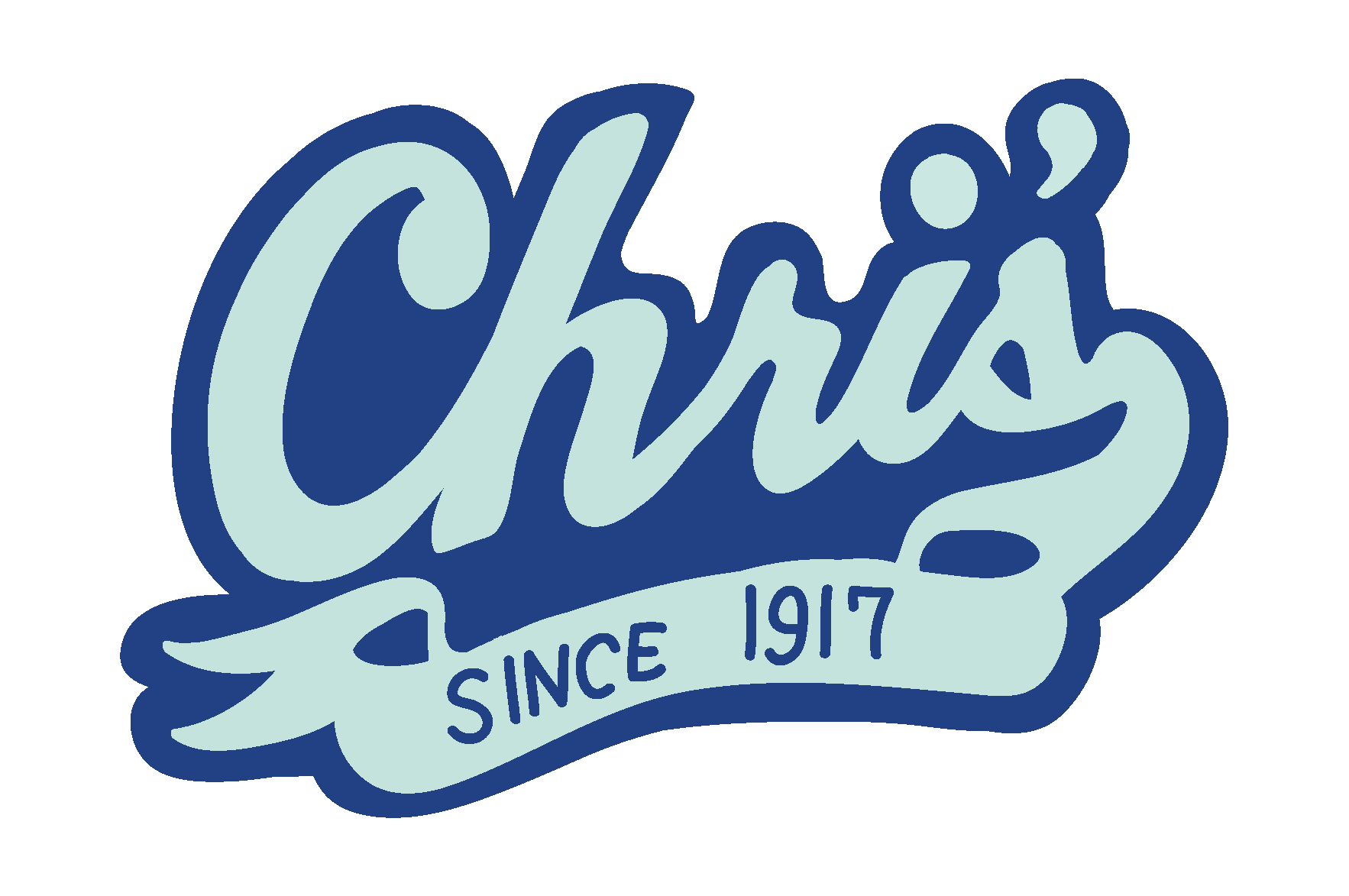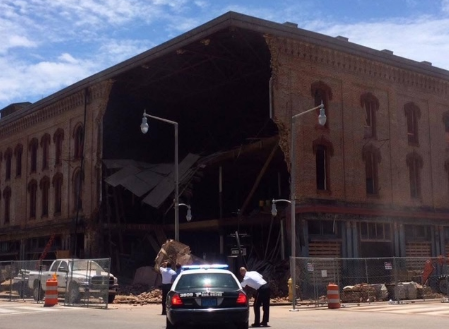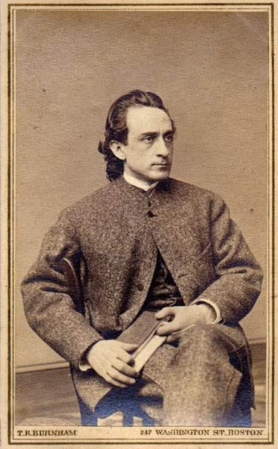The old Montgomery Theatre stood on the corner of Perry and Monroe Streets and was once a cultural gem for the city of Montgomery. Construction began in 1859 under the supervision of designer and architect, Daniel Cram who was also the Superintendent of the Montgomery and West Point Railroad and his father-in-law, Charles T. Pollard, the owner of the theatre and president of the Montgomery and West Point Railroad. The building was constructed by B.F. Randolph and A.R. McLelland. The woodwork was undertaken by Mr. McLelland and the brickwork and plastering work by Mr. Randolph. The joiner and inside woodwork were carried out by George and Ed Fletcher. The Fletchers shop stood across the street from the theatre. The mason labor was almost all completed by female slave labor, owned by Mr. Randolph. Once completed in 1860, the theatre was an architectural masterpiece.
The Old Montgomery Theatre
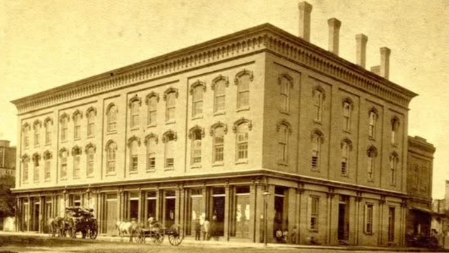
The Historic Old Montgomery Theatre
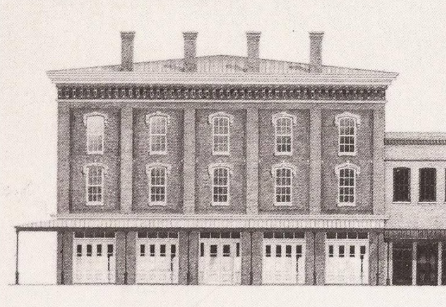
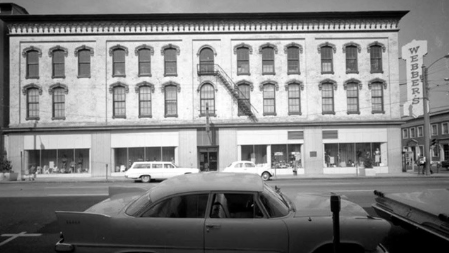
The main door to the theater faced Perry Street and a smaller door opened to Monroe Street. Theatre goers would enter through these doors and proceed to a grand staircase leading to the orchestra seats. There was an additional staircase leading up to the balcony as well as box seating. All total, the theatre could accommodate up to 900 people (when I toured the facility in the early 1990’s, the outline of the seats and balcony could still be seen on the walls).
The ground floor of the building housed the city post office along with merchants who sold their wares to patrons. To the left of the theatre was the popular saloon, The Hole in the Wall, Jr. This spot was little brother to The Hole in the Wall on Market Street (Dexter Avenue).
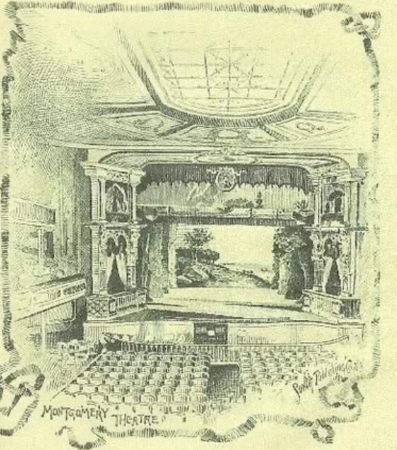
Montgomery was located half-way between Atlanta and New Orleans, lending itself as a natural stop for theatre and opera companies, along with minstrel groups. Many of the best actors and actresses of the day performed in Montgomery. The first play performed was “School for Scandal” staring one of the most famous actors of the day, John Wilkes Booth. Booth, his father, and brother were all great actors at the time. All three performed in repertoire for many months in 1860.
Prior to the beginning of the war, the Bryan Minstrels, led by Daniel Emmett, performed at the theatre. Emmett was born in Ohio and served in the army until 1835. After his discharge, he performed with the circus until he, along with friends, formed a minstrel group in 1843. When Emmett and the Bryan Minstrel Group were in Montgomery, they played a new song by Emmett called “Dixie.” The song was instantly popular with the crowds. The leader of the Montgomery Brass Band, Herman Arnold, asked Emmett for the sheet music to the song, but there wasn’t any as the minstrel’s played by ear. The story goes that Emmett wrote the score to “Dixie” on a back wall of the theatre and Arnold transcribed the song for his group. The Montgomery Brass Band played the popular song in February of 1861 as they marched up Dexter Avenue for the inauguration of Jefferson Davis, president of the Confederacy.

Prior to the beginning of the war, the building played host to pro-secession crowds. Men such as Alexander Stephens and William Lowndes Yancey spoke in fiery speeches. The famous actress Maggie Mitchell would speak in a very dramatic voice as she ripped the union flag from its pole, trampled it, and carried the Bonnie Blue Flag. When she performed for pro-union groups up north, she would trample the bonnie blue and wave the stars and stripes.
Following the war, the theatre continued to operate and open its doors to patrons. Tensions ran high between the citizens of Montgomery and the occupying Yankee forces. On one occasion, an army detachment, made up of mainly Native Americans, provoked local brothers Billie and Henry Porter and their friends. Shots were fired by both sides inside the theatre, causing chaos. The brothers were upset by the way they had been provoked by the troops. The following night, they found the members of the detachment as they made their way back to camp. Again, shots were fired, this time along Commerce Street, wounding some of the Native American troops. As a few of the troops made a stand, Billy Porter took aim at the officer he thought was in charge. In the confusion, Billie missed the officer and shot his brother, Henry, killing him.

The theatre continued to serve the city until 1907 when it was replaced by a new showplace on Dexter Avenue called the Grand Theatre, just a few blocks from where Chris’ Hotdogs would open. The building became a department store and was purchased by the Pelzer family in the 1930’s. Webber’s Department Store served Montgomery until it closed in the 1990’s.
Following the closure of Webber’s, the building sat empty for many years. Finally, in 2014, plans were underway to refurbish the theatre. On a warm afternoon in July, as men worked on the building, part of the west wall collapsed onto Perry Street. No one was injured in the accident, but the fate of the building was sealed. Ultimately, it was decided restoring the building wasn’t an option and the decision was made for it to come down. Most of the bricks and architectural elements were taken down and preserved by the city.
The site now sits empty.
